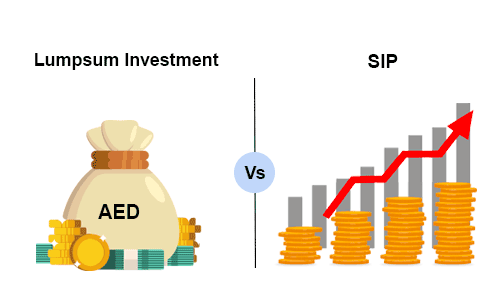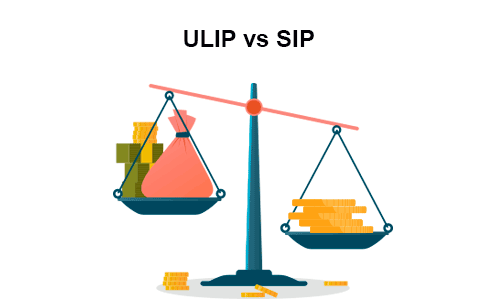How Much to Invest in SIP? – An Investment Guide
You can easily invest in equity mutual funds in a matter of minutes using a systematic investment plan (SIP). All you need to do here is to sign up on an online investment portal, provide the credentials, link your bank account, and commence the transaction. However, before you start investing in mutual funds via SIP, it is crucial to know how much to invest in SIP and how much should be the aggregate amount in the SIPs.
This article offers insights into the 50:30:20 rule to determine how much to invest in SIP. It will also discuss the other things to consider when investing in mutual funds through SIP.
Table of Content
What is SIP?
A systematic investment plan (SIP) enables you to invest in equity mutual funds in an organised manner. This investment method is often used by beginners who don’t have sufficient funds to allocate wealth in an efficient way to earn returns on investment.
When you opt for an SIP, a portion of your funds is deducted from your bank account regularly and invested in a mutual fund of your choice. As the mutual fund appreciates, your return on investment (ROI) grows.
SIPs are generally taken to develop wealth over the long term and meet future financial goals like a child’s education, creating a retirement corpus, and more. Compared to direct stock investments, SIPs are a more secure way to accrue funds that meet your various investment goals.
How Much to Invest in SIP?
To understand how much to invest in SIP, you can start by following the 50:30:20 rule. As per this rule, 50% of your income must be devoted to your necessary expenses like paying utility bills or medical bills, 30% can go for leisure and wants, and the remaining 20% of the income must go into savings and investments plan.
- Your needs can include bills, rent, EMIs for home loans, and more
- The income spent on ‘wants’ implies the money you spend on leisure or less important items and activities like dining out, watching a movie, or buying the latest gadget
- When it is said to save and invest, it simply refers to creating an emergency corpus in your bank account, investing in mutual funds using SIP, or investing in equity
Factors that Determine How Much to Invest in SIP
Besides following the 50:30:20 rule, you should also consider certain key factors to determine how much to invest in SIP –
- Your Financial Goals – Before investing in mutual funds via SIP, you should first determine your short-term and long-term goals. If you have chalked down the clear financial milestones you plan to achieve, investing via SIP can become easier. The goals could be preparing a retirement corpus, saving for future health expenses, or financing your child’s higher education. There is no fixed investment amount regarding the question ‘how much to invest in SIP’ – it all depends on the goals you set, which, in turn, depend on your current lifestyle, income, and inflation.
- How Long Do You Plan to Invest – The amount that you invest is based on whether you will achieve your financial goals in the long run or short run. You can opt for long-term SIPs if you want to create wealth. For this, you would need to start investing when young as you would be able to take the risk and even invest more portion of your income in SIP. However, if you plan to invest in SIPs in your 40s or when you are near your retirement, you won’t be able to invest much in them.
- Your Risk Appetite – An SIP investment is usually a less risky investment option compared to direct investment products like equity. Nevertheless, due to being linked with the market, certain risk is present with SIPs as well. To know how much to invest in SIP, it is also necessary to be aware of your risk appetite. When you are young, your risk appetite is usually on the higher side. In such cases, you can invest more in SIPs during your youth as the returns may significantly increase in the coming years.
- The Category of Mutual Funds – Different types of mutual funds can be found for investment – the amount that you would need to invest will depend on your chosen mutual funds category. If you plan to invest in a riskier fund for the long run, you can invest in small-cap mutual funds or more focused funds which can offer a higher return on investment. The amount that you would need to invest would be different from the funds you would go for in the short term.
Key Takeaways
- You can invest in equity mutual funds in a matter of minutes using a systematic investment plan (SIP). This can be done by signing up on an online investment portal using your credentials, linking your bank account, and commencing the transaction.
- Before you start investing in mutual funds via SIP, it is crucial to know how much to invest in SIP and how much should be the aggregate amount in the SIPs.
- An SIP can help you invest in equity mutual funds in an organised manner. This investment method is often used by beginners who don’t have adequate funds to invest in an efficient way to earn returns.
- To estimate how much to invest in SIP, you can follow the 50:30:20 rule. As per this rule, 50% of your income could be devoted to your necessary expenses like paying utility bills or medical bills, 30% can be used for leisure and wants, and 20% of the income should go into savings and investments.
- Other factors to consider to know how much to invest in SIP are your financial goals, time horizon, risk appetite, and the category of mutual funds you wish to invest in.
- If you have chalked down the clear financial milestones you plan to achieve, investing via SIP can become easier. The goals could be preparing a retirement corpus, saving for future health expenses, or financing your child’s higher education.
- The amount you invest would be based on whether you will achieve your financial goals in the long run or short run. You can opt for long-term SIPs if you want to create more wealth. For this, you would need to start investing early as you would have a higher risk appetite, which can lead you to invest a larger portion of your income in SIP.
- As different types of mutual funds can be invested in, the amount that you need to invest will be dependent on the investment category you choose.
Policybazaar UAE – Helping you navigate the wilderness of the insurance world!

More From Investment
- Recents Articles
- Popular Articles













.jpg)











.jpg)
.jpg)









